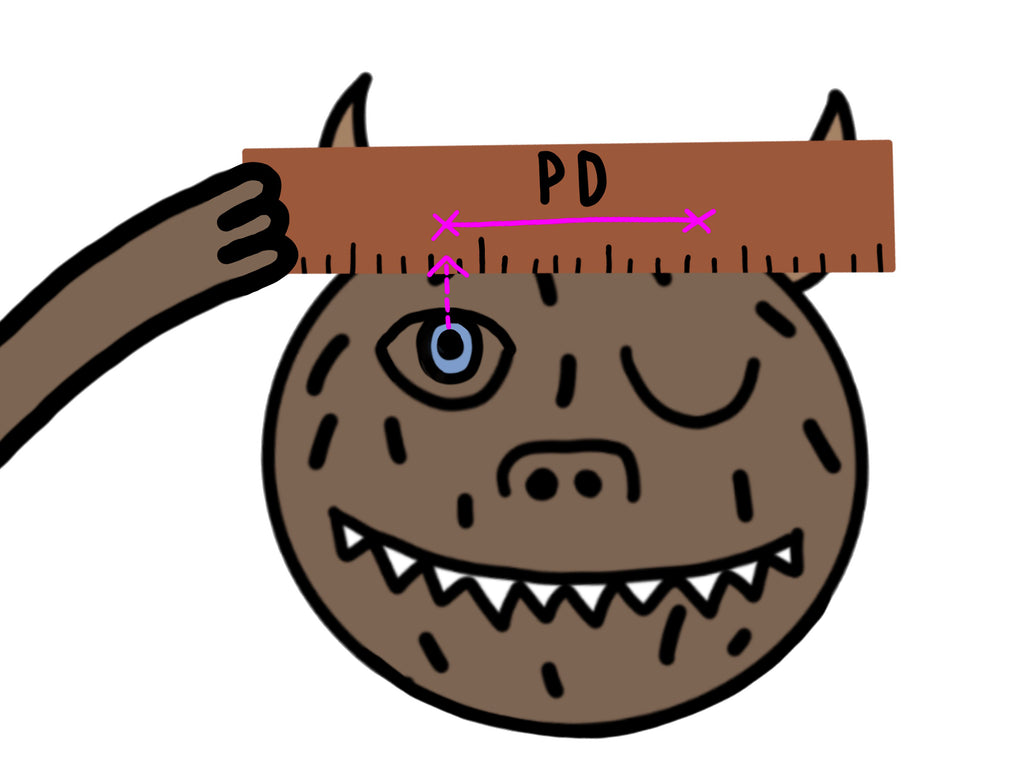What is your pupillary distance and why does it matter?
Your pupillary distance (PD) refers to the horizontal distance between the centers of your pupils. This measurement enables the optical lab to align the focus of the lenses with the pupils of your eyes, ensuring maximum clarity.
Your optometrist should be able to share your PD with you, but you can also measure it yourself with a ruler and a mirror or use a PD measurement mobile app.
Are there apps to measure pupillary distance (PD)?
Here are two apps you can use to measure your PD with your mobile device:
How do you measure pupillary distance at home?
You can measure your PD at home with a ruler and mirror.

1. Stand about eight inches (20 cm) away from a mirror.
2. Hold a ruler above your eyes.
3. Close your right eye and align the ruler’s mm-line over the centre of your left pupil.

4. Look straight, close your left eye and open your right eye.

5. The difference between the measurement values aligned with your left and right pupils is your PD.
6. Repeat the process three times to ensure a consistent measurement.
What is the average pupillary distance (PD) for females?
The average PD for adult females is 62 mm, which is about 2.44 inches.
What is the average pupillary distance (PD) for male?
The average PD for adult males is slightly larger at 64 mm, which is about 2.52 inches
What is single PD v. dual PD?
Sometimes, your prescription may indicate a single PD or a dual PD.

Single PD is the total horizontal distance between the centres of your pupils, whereas dual PD refers to the individual measurements between your nose bridge to the center of each eye.

For example, your right PD is the distance between the centre of your nose bridge to the centre of your right pupil, and your left PD is the distance between the centre of your nose bridge to the centre of your left pupil.
Dual PD measurements offer greater accuracy because most of us don't have symmetrical faces where your left and right pupils are equidistant from your nose.
Is PD different for reading glasses?
Yes, PD is widest when looking into the distance and narrowest when looking at closer objects, like reading a book.
To find your PD for reading glasses, subtract 3 mm from your single PD or 1.5 mm from your right and left dual PD measurements.
For example, if your single PD for regular glasses is 63, it is 60 for reading glasses, and if your dual PD measurements are 33 and 30 for regular glasses, they are 31.5 and 28.5 for reading glasses.
What's the difference between PD and segment height?
PD is the horizontal distance between your pupils, while segment height is the vertical distance between the bottom of your lens to the center of your pupil for progressive lenses.
Only progressive prescriptions require segment height. Learn more about segment height and how to measure it here.
